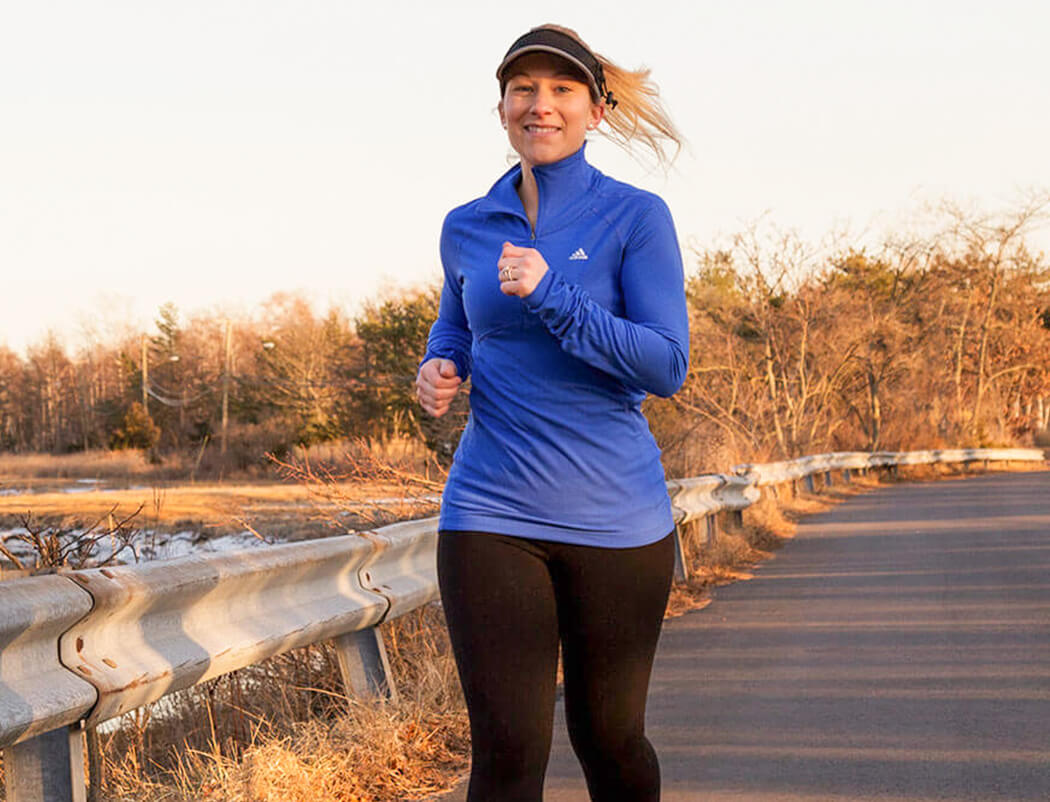Runners log so many miles outside that unless you run in the dark, you are continually exposed to the sun and its damaging rays. Even on cloudy or overcast days, the sun’s UV radiation can still reach your skin. Although the sun is stronger in the warmer months than in the winter, protection is a year-round must for runners or any other outdoor athlete.
Runners aren’t just lying on the beach, so do they really need to worry about the sun?
In a word, yes. Here a few sobering facts from the Skin Cancer Foundation:
- More people are diagnosed with skin cancer each year in the U.S. than all other cancers combined
- 1 in 5 Americans will develop skin cancer by the age of 70
- An estimated 178,560 cases of melanoma will be diagnosed in the U.S. in 2018, and an estimated 9,320 people will die of melanoma in the U.S. in 2018
- Over 85 percent of skin cancers are associated with exposure to ultraviolet (UV) radiation from the sun.
So to avoid being a statistic, what is the best sun protection strategy when running?
There are a few basic prevention guidelines to follow whenever running in daylight:
- Avoid running between 10 a.m. and 4:00 p.m. when the sun’s rays are the strongest
- Clothing is the single most effective form of sun protection, so cover up with clothing in opaque fabric to the extent practicable and in the winter cover your face and neck for sun and cold protection with gear like these multifunctional Rokbands
- Eyes can suffer sun damage, too, so protect them with a brimmed hat or sun visors and UV-blocking sunglasses
- Use a water-resistant, broad spectrum sunscreen with an SPF of at least 30.
Sun damage is cumulative so be sure to protect yourself EVERY time you hit the road.


There are hundreds of sunscreens on the market, which are the best ones for runners?
The abundance of sunscreens available is a good thing, but that can make it confusing and difficult for any runner to choose the right one. When shopping for a sunscreen, look for ones with these features:
- ➢ Broad-spectrum protection. UV radiation comes in two forms: UVA and UVB. UVB is the kind that causes sunburn, and UVA can alter DNA and lead to cancer and visible aging. Many sunscreens only offer protection against UVB so one that protects against both is crucial.
- ➢ SPF of 30 or higher. SPF is the time it takes for skin to burn without protection, but that also depends on light intensity and application thickness. Above 30 the increase in protection is minimal so don’t be misled into thinking that one with a higher number will give a corresponding increase in protection.
- ➢ Physical sunscreen. There are two types of active ingredients that block UV in sunscreens: chemical and physical. Chemical sunscreens absorb UV before it reaches the skin, and physical sunscreens reflect the radiation. Chemical sunscreens contain ingredients such as oxybenzone and are linked to hormone disruption. They are more widely available, less expensive, and easier to apply. Physical (also called “mineral”) use zinc oxide and/or titanium dioxide. These are less likely to cause skin irritation but tend to be thicker, harder to apply and may leave a white residue on the skin. There is concern that nanoparticles of zinc oxide and titanium dioxide may be small enough to pass into the bloodstream, so most physical sunscreens are now “non-nano”.
- ➢ Water- or sweat-resistant. This type of product is less likely to run into your eyes and cause stinging and irritation and will last longer during physical activity than non-resistant sunscreens.
- ➢ Cream, lotion or stick. Any of these three need to be applied deliberately so you won’t miss any spots. Spray sunscreens are popular because they are quick and easy to apply – especially to hard-to-reach areas – but they have been connected to respiratory issues and are not recommended by many experts (and the FDA has threatened to ban them).
- ➢ PABA-, paraben- and fragrance-free. None of these are necessary and can cause allergic reactions and photosensitivity.
So, AVOID sunscreens with chemical ingredients, PABA, parabens or fragrance, sprays, SPF below 30 and that aren’t water- or sweat-resistant.
What is the best way to use sunscreen when running?
Be sure to cover all exposed areas – including ears, lips, eyelids, backs of hands and along the hairline. If you are running in shorts and a tee you will need at least 1 ounce (about a shot glass) of sunscreen to do the job right. It may seem obvious, but read the application instructions and follow them. A good rule of thumb for timing is to apply it 20 to 30 minutes before heading out, and sweat-resistant sunscreens typically need to be reapplied every 80 minutes (so when you are on a long run, take along a stick form that you can put in your pocket hat).
Ultimately, the best sunscreen is the one that you actually use consistently and correctly. So every time you go for a run, slather on sunscreen and slap on a hat before you hit the road.
For more information on sun protection and specific sunscreens, check these sites: Skin Cancer Foundation, SimplySunSafe, and Environmental Working Group.

